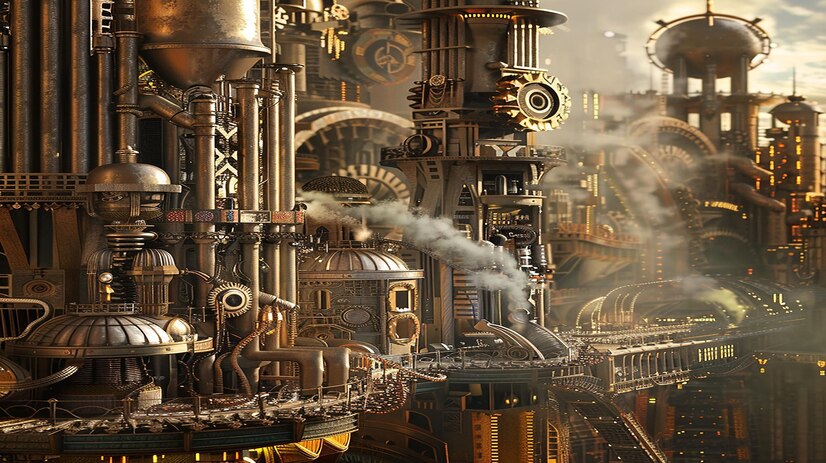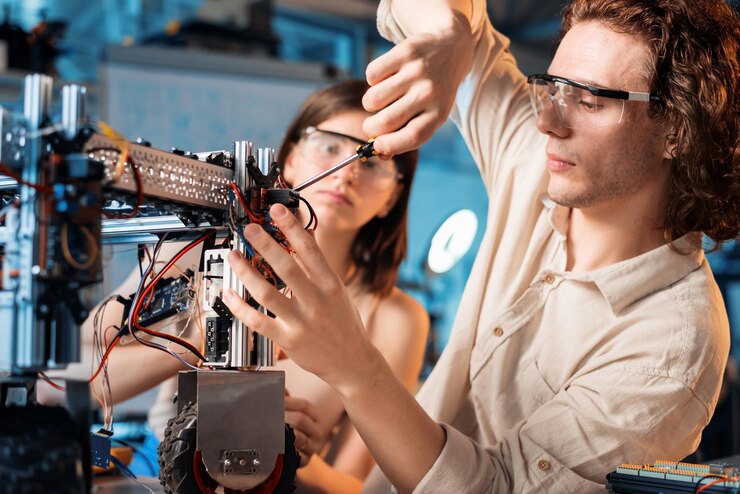Table of Contents
Are steam engines intellectual technology? This question often sparks curiosity among history enthusiasts and technology buffs alike. Steam engines, which played a pivotal role in the Industrial Revolution, are considered one of the greatest inventions in human history. But what makes them “intellectual” technology, and why are they so important even today?
The steam engine is more than just a machine that produces power from steam; it’s a symbol of human ingenuity. Are steam engines intellectual technology? In simple terms, yes. These machines require a deep understanding of mechanics, thermodynamics, and engineering. At the time of their invention, they were cutting-edge technologies, developed through scientific knowledge and clever innovations that shaped modern industry.
Are Steam Engines Intellectual Technology? A Look into Their Impact
Steam engines are often seen as a critical part of our past, but are they intellectual technology? Yes, they are! These machines were the result of brilliant ideas and deep thinking. The steam engine is not just a machine that moves things; it represents human curiosity and innovation.
The first steam engines were built to solve problems. They helped pump water from mines and powered factories. But creating a steam engine was no easy task. Engineers had to understand heat, pressure, and how things move. This required real scientific knowledge. So, in a way, steam engines are intellectual technology because they were created using knowledge and smart thinking.
They changed everything! With the steam engine, we could make machines work faster and more efficiently. This led to the growth of factories, better transportation, and the rise of new industries. It’s clear that steam engines weren’t just inventions; they were important breakthroughs in how humans understood and used technology.
How Steam Engines Shaped the Modern World: The Intellectual Foundations
Steam engines helped build the world we live in today. They brought about huge changes in how we work, live, and think. But how did steam engines shape modern life? Let’s look at the intellectual foundations behind them.
The Role of Steam Engines in Industrial Progress
- Enabled factories to run on machines instead of manual labor
- Created faster ways to transport goods across large distances
- Helped build the foundation for more advanced technologies in later years
Steam engines made a big difference in the way people worked. Before steam engines, many jobs were done by hand. With steam power, machines took over tasks, and this led to faster production. This shift in how work was done was a key factor in the Industrial Revolution.
The Birth of Steam Engines: Exploring Their Role in Scientific and Intellectual Progress

When we think about the birth of steam engines, we need to think about the brains behind them. People like James Watt and Thomas Newcomen didn’t just build engines; they used deep scientific knowledge to improve them. So, are steam engines intellectual technology? Absolutely!
The birth of steam engines marked a turning point. Before them, most energy came from people, animals, or wind. With steam, we could control and use energy in new ways. Engineers and scientists started applying their knowledge of heat and mechanics to create better engines. This was a major step in human intellectual growth.
Key Discoveries That Led to the Steam Engine
- Understanding the properties of steam and pressure
- Developing the piston and cylinder mechanism
- Creating systems to convert steam into mechanical energy
By improving the steam engine over time, inventors not only changed industries but also advanced human knowledge. It wasn’t just about the machine; it was about understanding the science behind it.
From Simple Pumps to Complex Machines: Are Steam Engines Intellectual Technology?
The steam engine evolved from simple designs to more complex machines. Early versions were just pumps used to remove water from mines. But with time, steam engines became much more advanced, and this evolution shows their intellectual value. Let’s dive deeper into how steam engines became complex machines.
Early steam engines like the one built by Thomas Newcomen were simple, but they laid the foundation for more advanced versions. These engines used steam to create a vacuum, which helped pump water from deep mines. But as scientists and engineers learned more about steam, they realized they could make the machines work even better.
The Evolution of Steam Engines
- The addition of separate condensers to improve efficiency
- Use of multiple cylinders for greater power output
- Creating engines that could power entire factories and trains
By the time James Watt came along, steam engines became far more efficient. They could now power trains, factories, and ships. This progress shows how steam engines were much more than just tools; they were the product of intellectual thinking.
Why Steam Engines Are More Than Just Machines: An Intellectual Perspective
When we talk about steam engines, it’s easy to think of them as just big machines. However, they are much more. They represent a huge leap in human intellectual capability. Let’s explore why steam engines are more than just simple machines.
The truth is, steam engines were not just built by following instructions. They were the result of creative thinking and problem-solving. Engineers had to use their knowledge of physics, pressure, and materials to build a working machine. This kind of intellectual work goes beyond simply putting parts together.
Why Steam Engines Stand Out
- They combined knowledge of different scientific fields, like thermodynamics and mechanics
- They were designed to solve specific, real-world problems, like powering factories or pumping water
- Their development required years of research, trials, and improvements
Steam engines were intellectual marvels of their time. They were more than just machines; they were the result of deep intellectual thought, experimentation, and progress.
The Genius Behind Steam Engines: Intellectual Innovations of the Industrial Revolution

The Industrial Revolution was a time of great change, and steam engines were at the heart of this transformation. The genius behind the steam engine didn’t come from a single person, but rather a collection of intellectual innovations by brilliant minds. These engineers and scientists looked at problems differently and found new ways to solve them.
Steam engines were born out of a need for more efficient ways to power machines. Think of it: in the early days, everything was powered by human or animal labor. The steam engine introduced a smarter way to harness energy, changing industries forever. The ingenuity behind the steam engine allowed society to expand rapidly and move beyond traditional methods of work.
Key Intellectual Innovations
- The idea of using steam to create power came from understanding the science of gases.
- The development of the steam engine itself was based on trial and error.
- James Watt’s innovations helped improve the engine’s efficiency and ability to perform more tasks.
Thanks to the intellectual innovations of people like James Watt, steam engines could power trains, factories, and ships. This opened the door to new industries and ways of thinking. The progress made by engineers during the Industrial Revolution set the stage for future technological breakthroughs.
Steam Engines and Intellectual Growth: What We Learned from These Machines
Are steam engines intellectual technology? Absolutely. The creation and advancement of steam engines taught us a great deal about how we understand energy, machines, and the world around us. Let’s explore how these machines contributed to intellectual growth.
The steam engine allowed people to ask big questions: How can we use heat to do work? What happens when we increase pressure? These were not simple questions. They required a lot of thinking and experimentation. The answers to these questions led to a deeper understanding of physics and engineering, which opened the doors for other technological advances.
How Steam Engines Contributed to Learning
- Steam engines required a deep understanding of energy, pressure, and temperature.
- They inspired people to think about energy in different ways.
- They helped scientists develop new technologies, like electricity and modern engines.
The steam engine pushed people to think about how we use resources and energy. It sparked a desire for deeper knowledge, leading to advancements in other fields. This intellectual journey was just as important as the practical applications of the steam engine itself.
Is the Steam Engine an Intellectual Masterpiece? Insights from History and Technology
The steam engine is often called an intellectual masterpiece, but what does that really mean? It’s not just a machine; it’s a testament to human creativity and problem-solving. Let’s dive into why the steam engine holds such an important place in the history of technology.
The steam engine’s creation wasn’t a quick or easy process. It took years of experimentation and improvement. Each step brought new discoveries in how machines could be powered, controlled, and optimized. The intellectual effort behind the steam engine was enormous, and its legacy continues today.
Why the Steam Engine Is an Intellectual Masterpiece
- It represents the transition from manual labor to mechanized power.
- It introduced new ways to use and control energy.
- The steam engine laid the groundwork for the development of other technologies like electricity and robotics.
When we think about the steam engine today, it’s easy to see how it transformed the world. But at the time, it was a groundbreaking, intellectual achievement that opened doors to new technologies. The impact of the steam engine is still felt in modern inventions and industries.
Are Steam Engines Intellectual Technology? How Engineers Revolutionized Industries

Engineers during the Industrial Revolution weren’t just building machines—they were revolutionizing industries. The steam engine was one of the key technologies that allowed them to change the world. But how exactly did these engineers use their knowledge to create something so powerful?
The process of designing and improving steam engines was not simple. It required creativity, testing, and a lot of intellectual thinking. Engineers had to understand complex principles of heat, energy, and pressure. With each improvement, steam engines became more efficient and could do more things, such as powering trains or running factories.
Engineers Who Changed the World
- Thomas Newcomen built the first successful steam engine for pumping water.
- James Watt improved the design and made it more efficient.
- Engineers used these improvements to make trains and ships faster and more reliable.
Thanks to the engineers of the Industrial Revolution, the steam engine didn’t just help one industry; it helped many. It allowed factories to grow, transportation to expand, and economies to thrive. The intellectual work behind the steam engine is what allowed engineers to shape the world as we know it today.
Steam Engines: The Bridge Between Scientific Discovery and Technological Innovation
The steam engine was more than just an invention—it was a bridge between scientific discovery and technological innovation. It took knowledge from fields like physics, chemistry, and engineering to create something practical and revolutionary. Let’s look at how the steam engine connected science and technology.
Before the steam engine, scientific discoveries were often just ideas. But with steam engines, these ideas became practical. Engineers took concepts about steam and heat and turned them into working machines. This connection between scientific knowledge and real-world applications helped kickstart the Industrial Revolution.
How the Steam Engine Linked Science to Technology
- The concept of using steam power was grounded in scientific study of gases and pressure.
- Engineers applied these scientific principles to create machines that solved real problems.
- The success of the steam engine inspired further technological innovations.
In many ways, steam engines were the first major example of how scientific discoveries could lead to technological advancements. They helped bridge the gap between theory and practice, and that connection continues to inspire engineers today.
Conclusion
Steam engines are indeed intellectual technology. They were not just machines; they were the result of deep thinking, scientific discoveries, and clever problem-solving. These inventions changed the way people worked and lived, powering factories, trains, and ships. Thanks to the smart engineers and scientists who improved the steam engine over time, we now have the technology that shapes our world today.
Steam engines might seem like simple machines, but they represent big ideas and important knowledge. They showed us how science and technology can work together to solve real-world problems. So yes, steam engines are much more than just technology—they are a symbol of human intellect and creativity that continues to inspire new innovations.
FAQs
Q: Are steam engines intellectual technology?
A: Yes, steam engines are intellectual technology because they were created using deep scientific knowledge and clever engineering to solve real-world problems.
Q: Who invented the steam engine?
A: The steam engine was improved by James Watt, but earlier versions were created by Thomas Savery and Thomas Newcomen in the 17th and 18th centuries.
Q: How do steam engines work?
A: Steam engines work by heating water to create steam. The steam expands and pushes a piston, which moves and produces mechanical power.
Q: Why were steam engines important during the Industrial Revolution?
A: Steam engines powered factories, trains, and ships, speeding up production and transportation, which helped drive the growth of industries.
Q: What is the difference between a simple and compound steam engine?
A: A simple steam engine uses one cylinder, while a compound engine uses two or more cylinders for better efficiency and greater power.
Q: Are steam engines still used today?
A: Steam engines are not used widely today, but their principles still influence modern technologies like steam turbines used for generating electricity.




